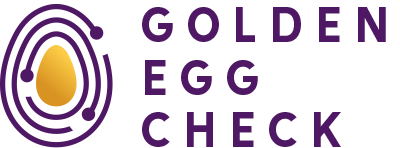Identifying ventures with growth potential involves examining several key factors that indicate expansion capability. Successful startups demonstrate scalable business models where revenue grows disproportionately faster than costs. These ventures typically have streamlined operations, strong unit economics, and address sizable markets. Identifying these characteristics early helps investors and founders evaluate long-term growth prospects and determine whether a business concept can transform from small startup to significant market player efficiently.
How can you tell if a startup is scalable?
Determining a startup’s growth potential requires analyzing multiple interconnected elements. The foundation begins with the business model design – specifically whether it allows for revenue expansion without proportional cost increases. Truly scalable ventures demonstrate revenue growth potential that outpaces operational costs, often through technology enablement and automation.
Market size serves as another fundamental indicator – ventures addressing small markets inherently face growth limitations regardless of execution quality. Additionally, operational efficiency and unit economics provide concrete evidence of scaling capability. When these elements align, a startup demonstrates the potential to grow exponentially rather than linearly.
What are the key indicators of a scalable business model?
Recurring revenue streams represent one of the strongest signals of scalability. Subscription models provide predictability in cash flows and significantly lower customer acquisition costs over time. This predictability helps both with financial planning and investor attractiveness.
Low marginal costs for serving additional customers enable exponential growth. Software businesses exemplify this principle – once developed, digital products can serve additional users with minimal incremental expense. Network effects further amplify scalability, where each new user increases value for existing customers.
High gross margins indicate pricing power and efficiency, allowing resources to be redirected toward growth initiatives rather than covering basic operational expenses. Finally, businesses with strong automation potential can expand without linear staff increases, maintaining efficiency even during rapid growth phases.
Why is market size important for startup scalability?
The total addressable market (TAM) establishes the ultimate ceiling for growth potential. Even perfectly executed business models face fundamental constraints if their maximum potential market remains small. Investors specifically assess market size because it directly impacts potential return on investment and exit opportunities.
Beyond sheer size, market growth rate significantly influences scalability potential. Rapidly expanding markets provide room for new entrants to capture share without necessarily taking it from established competitors. This dynamic also increases the likelihood of strategic acquisitions, as established companies seek to gain access to growth sectors through purchasing well-positioned startups.
Validating market size assumptions requires both top-down (overall market estimates) and bottom-up (specific customer segment analysis) approaches. The most compelling market analyses identify exactly who potential customers are, their specific needs, and realistic expectations about demand and pricing.
How do unit economics reveal a startup’s ability to scale?
Customer acquisition cost (CAC) and lifetime value (LTV) metrics provide concrete evidence of sustainable growth potential. When a business can acquire customers at a cost significantly lower than their lifetime value, it demonstrates fundamental economic viability that can fuel expansion.
The payback period – how quickly customer revenue recoups acquisition costs – indicates cash efficiency. Shorter payback periods enable faster reinvestment in growth initiatives, creating a virtuous cycle of accelerated expansion.
Contribution margin (revenue minus variable costs per unit) serves as perhaps the most direct indicator of scalability. Higher contribution margins mean more revenue flows to fixed costs and ultimately profit as volume increases. This efficiency allows startups to invest in growth while maintaining financial health.
When should founders focus on scalability versus product-market fit?
The startup journey typically follows a sequential progression where product-market fit precedes scalability concerns. Attempting to scale prematurely – before establishing that customers truly value and will pay for the solution – represents one of the most common startup failure patterns.
Appropriate scaling triggers include consistent customer demand, repeatable sales processes, and stabilizing unit economics. When customer acquisition becomes predictable rather than highly variable, scaling mechanisms can be implemented with lower risk.
Balancing these priorities requires continual reassessment. While product-market fit precedes scaling, designing for future scalability from early stages prevents painful rebuilding later. Investor-ready startups demonstrate both current traction and a clear path to efficiently expanding that traction.
What team capabilities indicate a startup can scale successfully?
Leadership experience, particularly in managing growth-stage organizations, strongly predicts scaling success. Founders who have previously navigated expansion challenges bring pattern recognition that helps avoid common pitfalls.
The ability to build systems rather than just solutions distinguishes scalable organizations. Teams that create repeatable, documented processes enable consistent execution even as the organization grows and new personnel join.
Hiring capability becomes increasingly critical during scaling phases. Teams that can attract, onboard, and retain talent efficiently maintain momentum during rapid growth instead of experiencing productivity plateaus.
Domain expertise ensures teams can adapt to evolving market conditions and customer needs without losing strategic direction. This expertise, combined with organizational adaptability, enables startups to maintain their competitive advantage even as they grow.
Startup scalability assessment framework
Evaluating scalability requires examining each factor discussed systematically. Begin by analyzing the business model design, particularly focusing on revenue growth potential relative to cost structure. Next, validate market size assumptions through both top-down and bottom-up approaches.
Measure unit economics rigorously, particularly CAC, LTV, payback period, and contribution margin. These metrics provide concrete evidence of scaling potential beyond theoretical possibilities. Assess team capabilities honestly, identifying gaps in experience or skills that could hinder growth execution.
At Golden Egg Check, we help startups evaluate these factors through a structured assessment process. By examining the 21 key criteria investors use to evaluate growth potential, we provide founders with clarity about their current position and specific improvements needed to enhance scalability. This analytical approach helps prevent premature scaling while ensuring startups are properly prepared when growth opportunities emerge.




